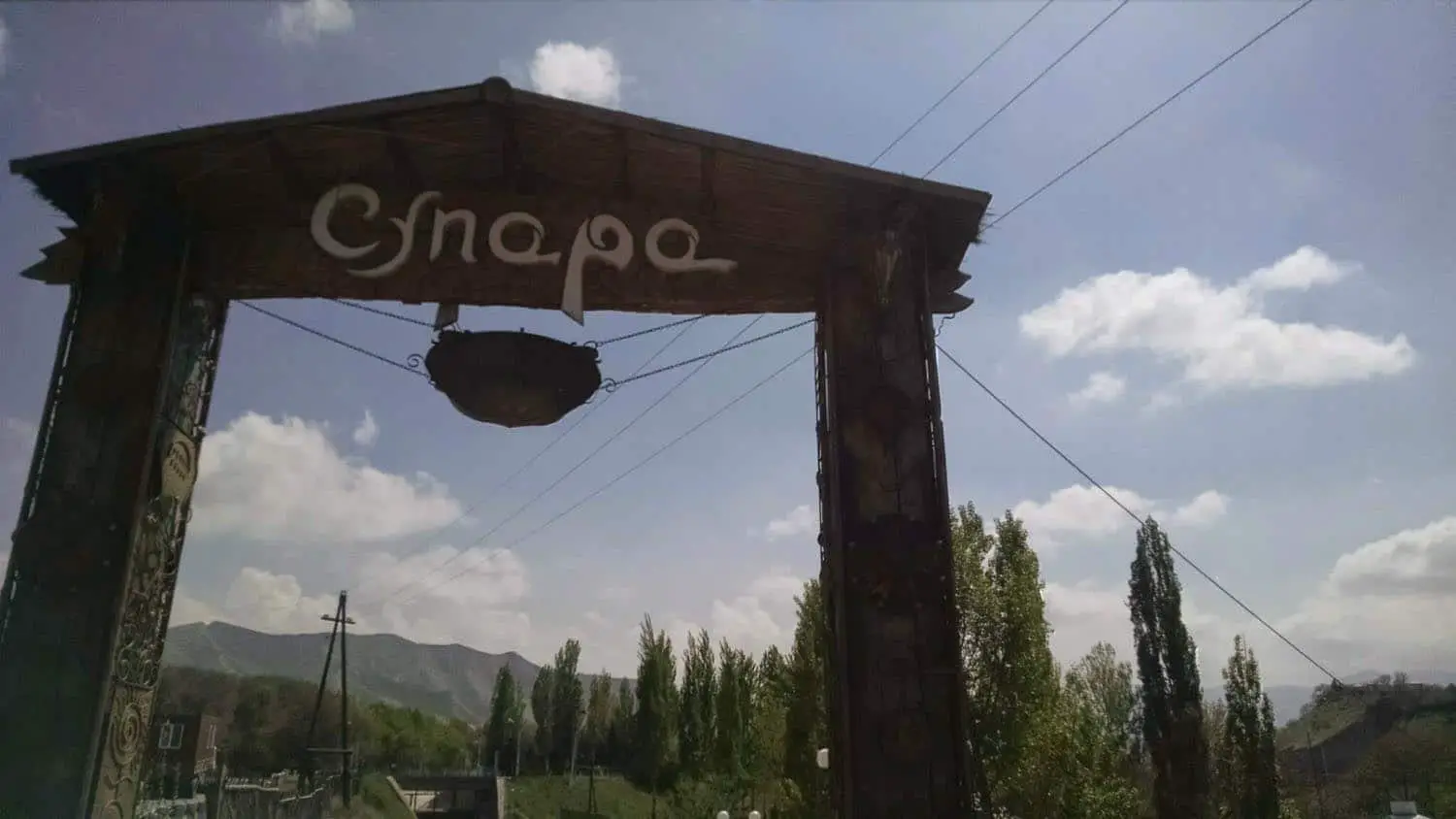Supara Ethno-Complex/Супара Этно-Комплекс
Supara.kg
1a Karagul Akmata Str., Kok-Jar village
Meals from 340 som
Супара Этно-Комплекс (Supara Ethno-Complex) on the scenic outskirts of Bishkek, was developed over the past several years by Tabyldy Egemberdiev, president of the enormously popular Шоро (Shoro) Company, which produces traditional Kyrgyz drinks, among other things. Egemberdiev’s wife, Janyl, was a principal designer on the project. The complex is a restaurant and event space intended to depict traditional nomadic Kyrgyz lifestyles. Made up mostly of felt and stone yurts, the complex was built using only natural materials, like clay, wood, straw and stone.
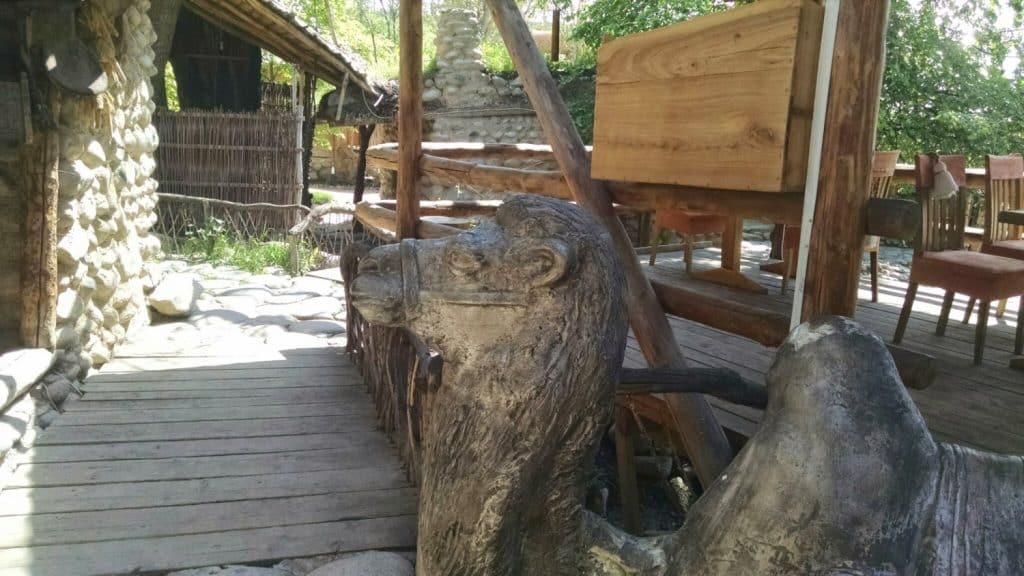
Supara is a pretty and interesting place to bring visitors from out of town (I learned of it through my teacher, when I asked about things to do when a friend came to visit). It’s also a lovely spot to take a walk – on the grounds of the restaurant complex, and just beyond it, in the hills.
My friend and I reached Supara by marshrutka (I had to put the marshrutka driver on the phone with someone from the complex, who told him where to stop, but it was otherwise an easy trip of about 45 minutes from the center of the city). After walking through the dramatic wooden arch that is the entryway, we were met along the downward path into the complex by a woman who asked if she could give us a tour, “to practice her English.” For the next forty minutes or so, we were led through the paths, over the small brooks and around the outdoor patios of the complex, and into the small stone buildings, wide yurts, and the enormous banquet hall that function as restaurant seating.
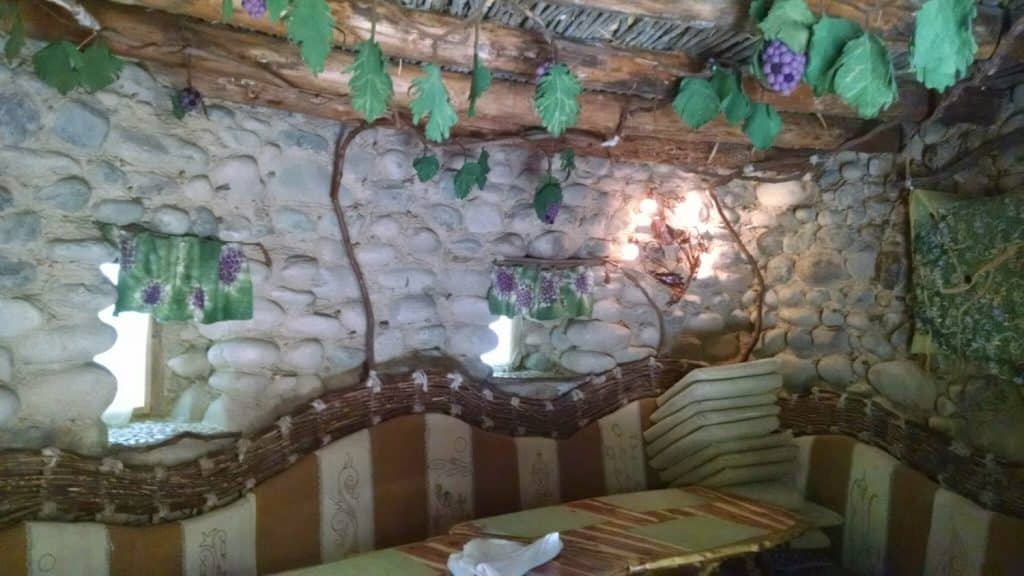
Our guide explained the history informing the design of each structure; some of the small stone yurts were built and furnished like ancient homes in the south of Kyrgyzstan (she pointed out the artificial grapes hanging from the ceiling of the home, as they traditionally would have).
Several felt yurts in the lowest part of the complex were arranged traditionally, in a horse-shoe pattern, she explained, with one yurt designated for men, and one for women. Traditional tools and items, like a супара – the complex’s namesake, which is a traditional leather tablecloth – hung on the inside walls of some yurts. We were walked past the “VIP yurt,” and saw through a window the portrait of writer Chinghiz Aitmatov hanging inside. The banquet hall, we discovered, is in fact an enormous yurt – the largest in the world, according to Supara’s website, at 350 square meters. Its walls were hung with beautiful rugs, and an impressive chandelier hung from the ceiling.
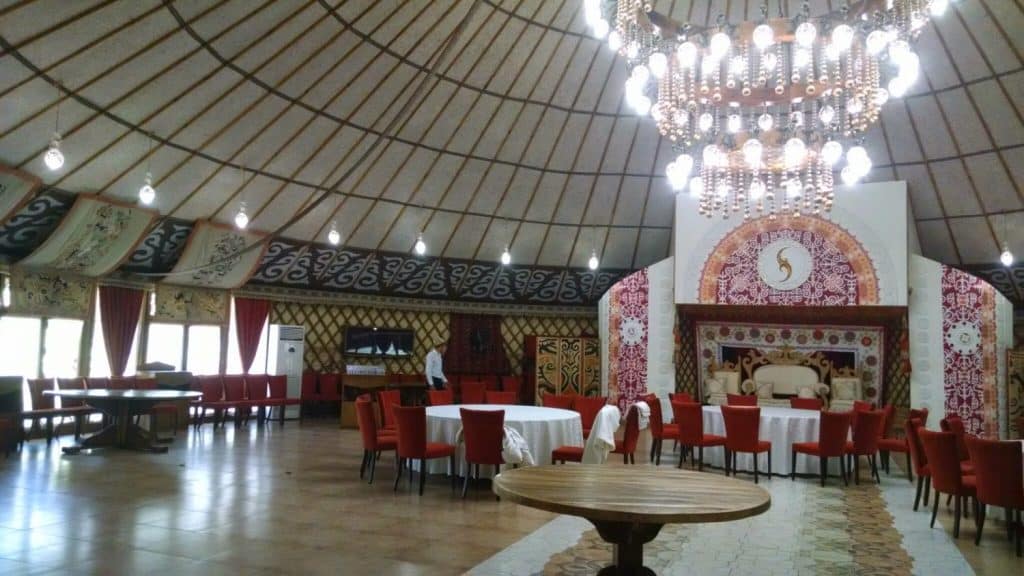
Supara is a popular destination for both locals and foreign diplomats, our guide told us. We were shown a rectangular stretch of lawn where there are stones for barbecuing (“for the Americans”), and where traditional celebrations like tushoo-toi (a child’s first steps) are often held.
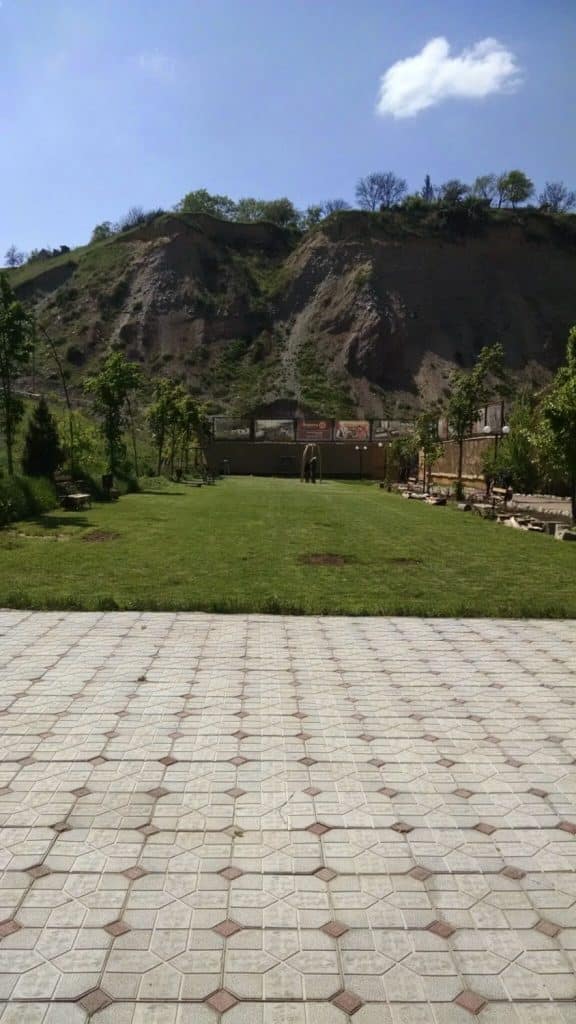
The educational and artistic constructions on Supara’s grounds are almost entirely dedicated to dining. The restaurant’s menu is the same, whether you sit in a felt or stone yurt, or on one of the large patios. My friend and I decided to sit in a stone yurt, which we had to ourselves. We sat on the floor around a low wooden table.
A meal at Supara is pricey by Bishkek standards, but still quite reasonable. There is an entire vegetarian section of the menu which I greatly appreciated. My friend and I both ordered овощи на мангале (vegetables on the grill), an enormous platter of grilled squash, pepper, eggplant and onion, for 340 soms ($5.60) a portion. We also had tea and some of the best bread I’ve ever tasted, called каттама – thin, moist layers of pastry fried in butter.
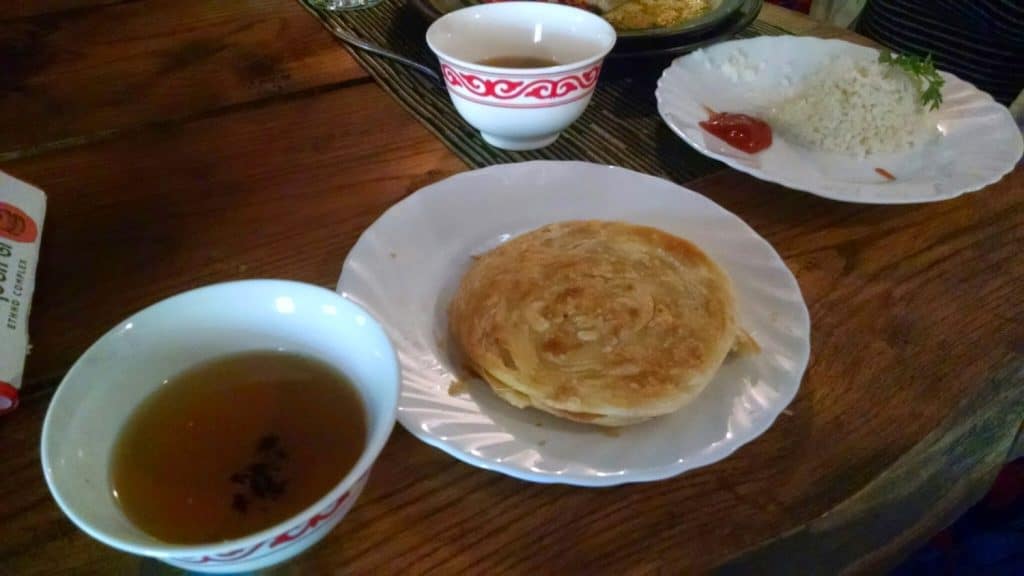
After our delicious meal, my friend and I explored the area around Supara. Next to the complex is a large reservoir, and beyond the water are grass-covered hills. A set of steep stairs just behind Supara leads up a hill and to a small village. A man we met in a little store showed us the best way uphill through the village and to a wide-open panorama of Bishkek. It felt very far from the city despite being just on its outskirts.
The village itself was unlike any other place I had seen in Kyrgyzstan, perhaps because it was built on a hill, and because many of the houses on each small street seemed to have whimsical adornments, like murals, pastel doors, or sculptures in the yards.

The Supara complex is not a substitute for exploring Kyrgyzstan’s cultural history through museums, performances, and treks into mountains and villages outside of Bishkek. But it is a delicious, beautiful, and interesting place to eat. And it highlights one of my favorite things about Bishkek, which is that a short marshrutka ride from the center of the city can transport you to an unexpectedly stunning landscape.
[xyz-ihs snippet=”SOPHIA-REHM”]

